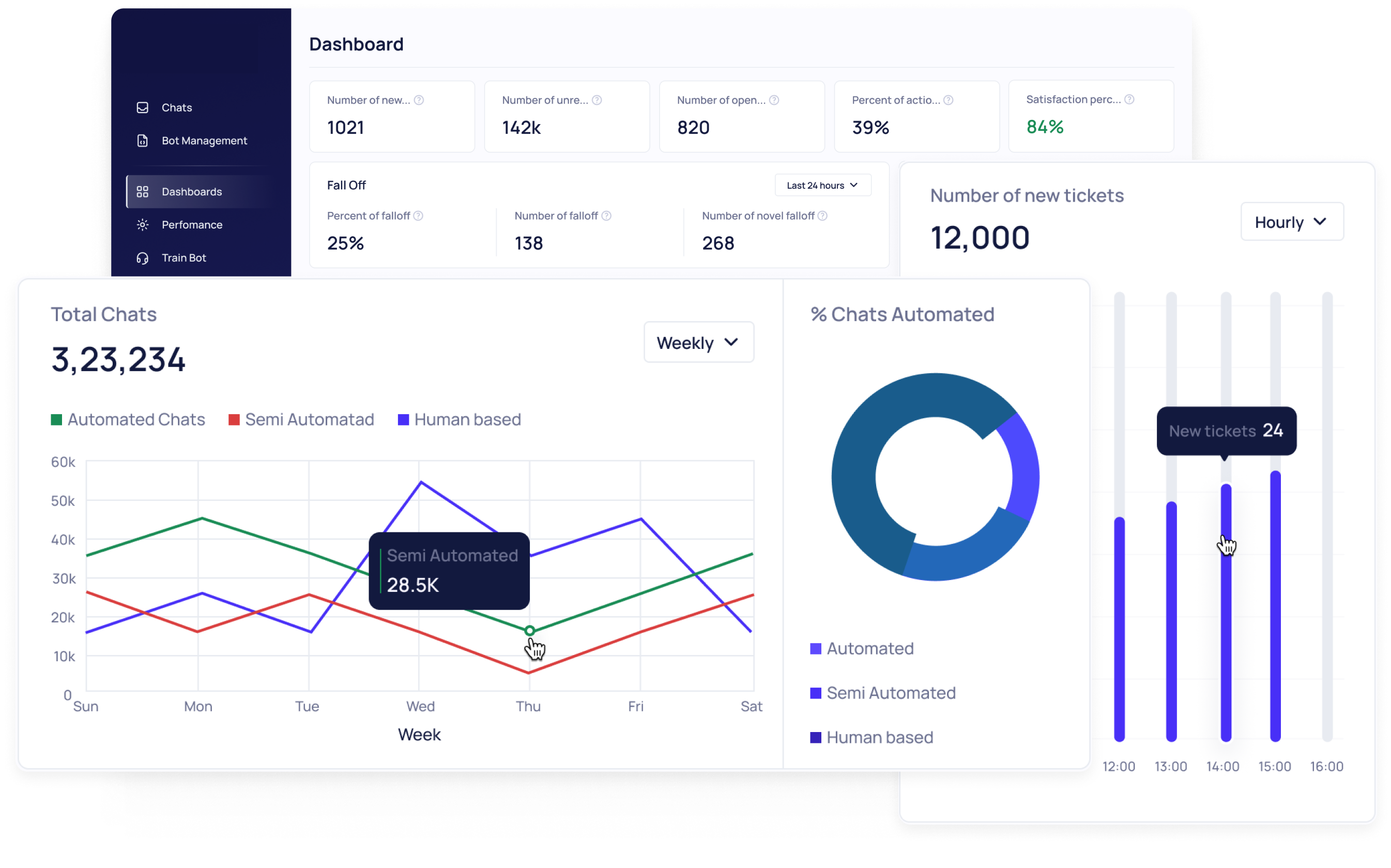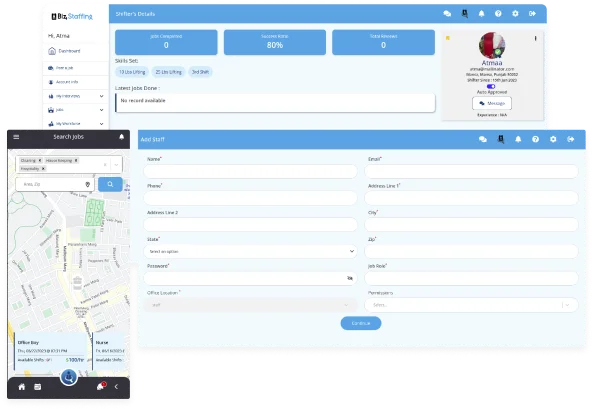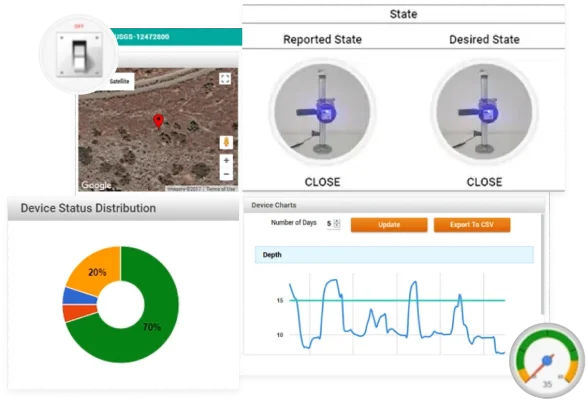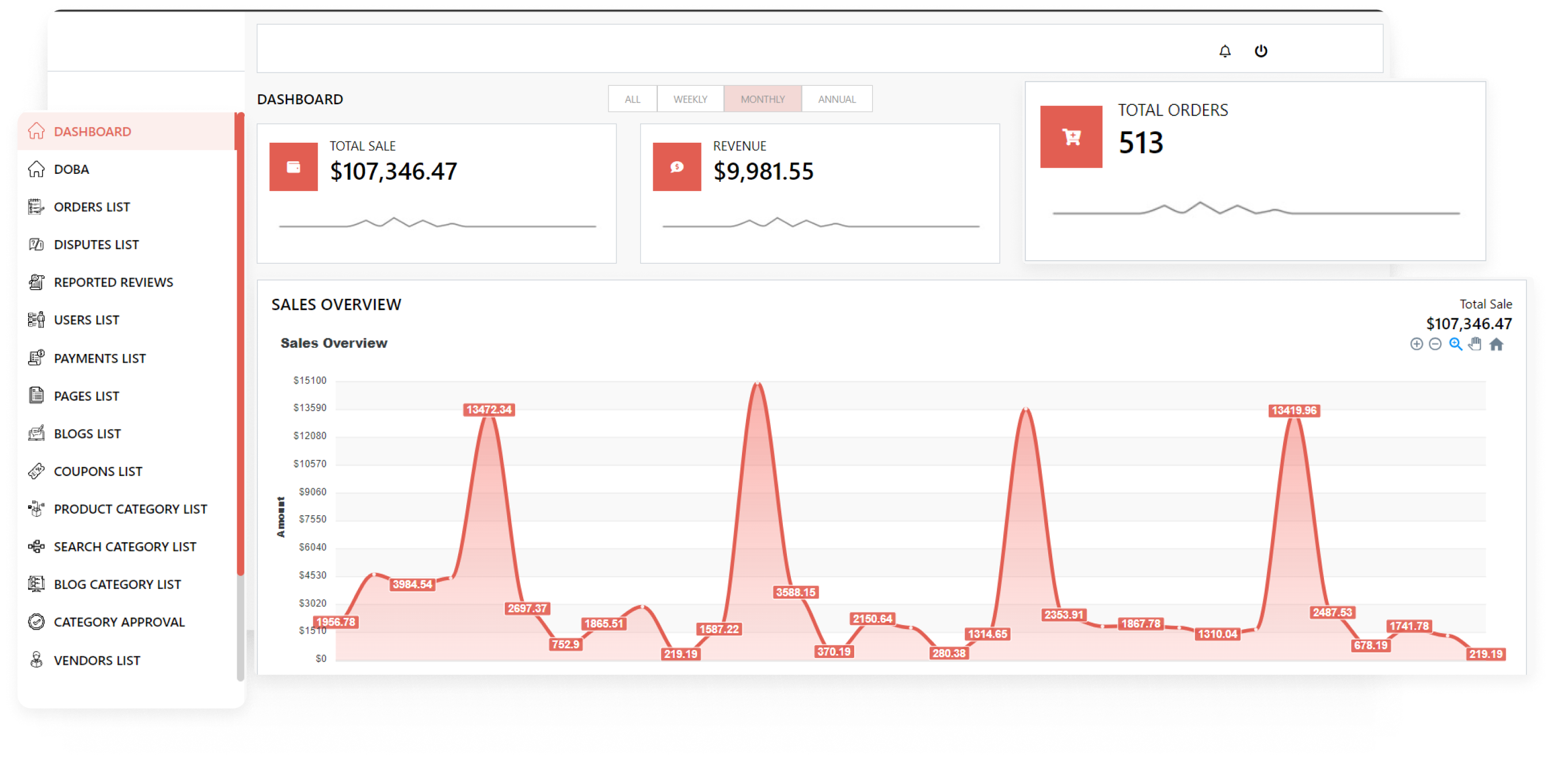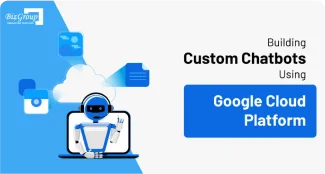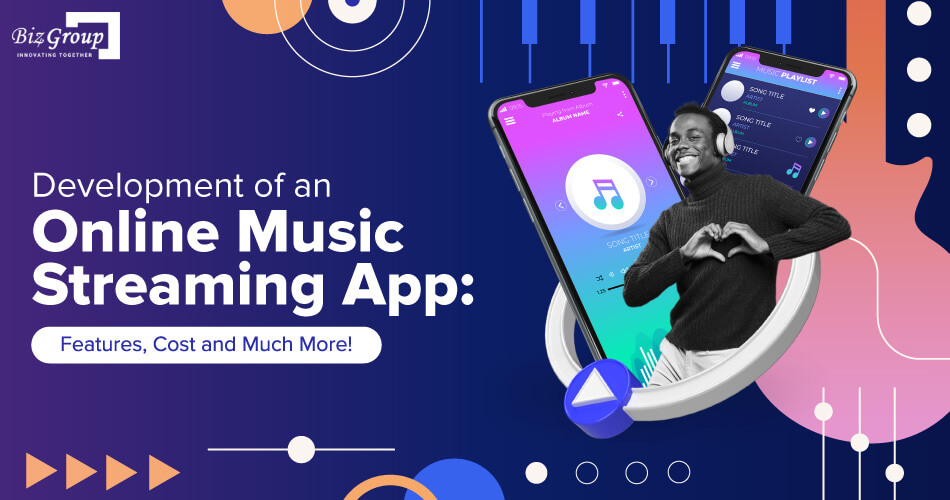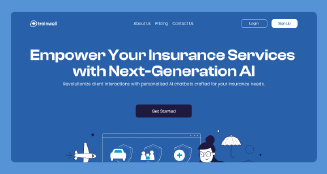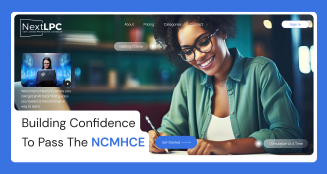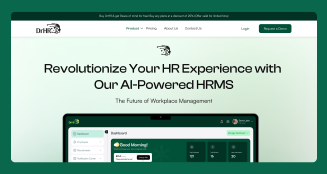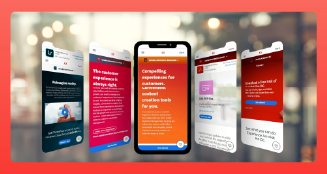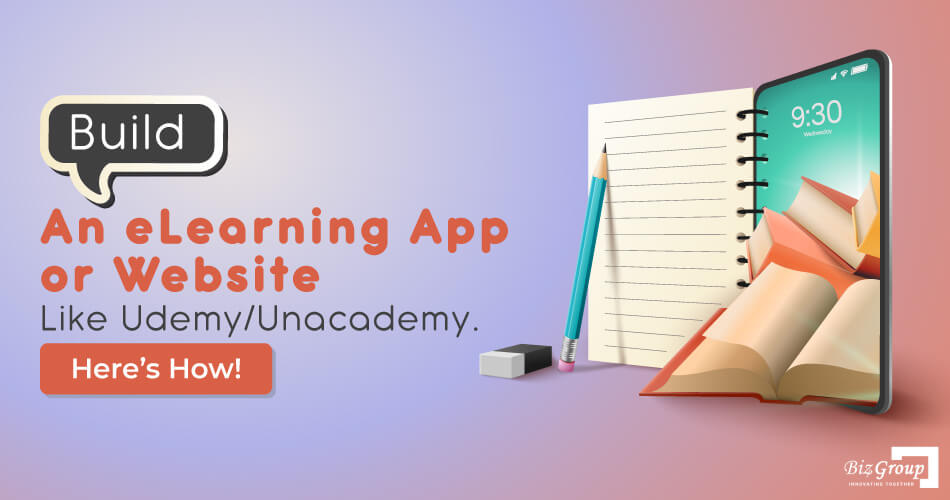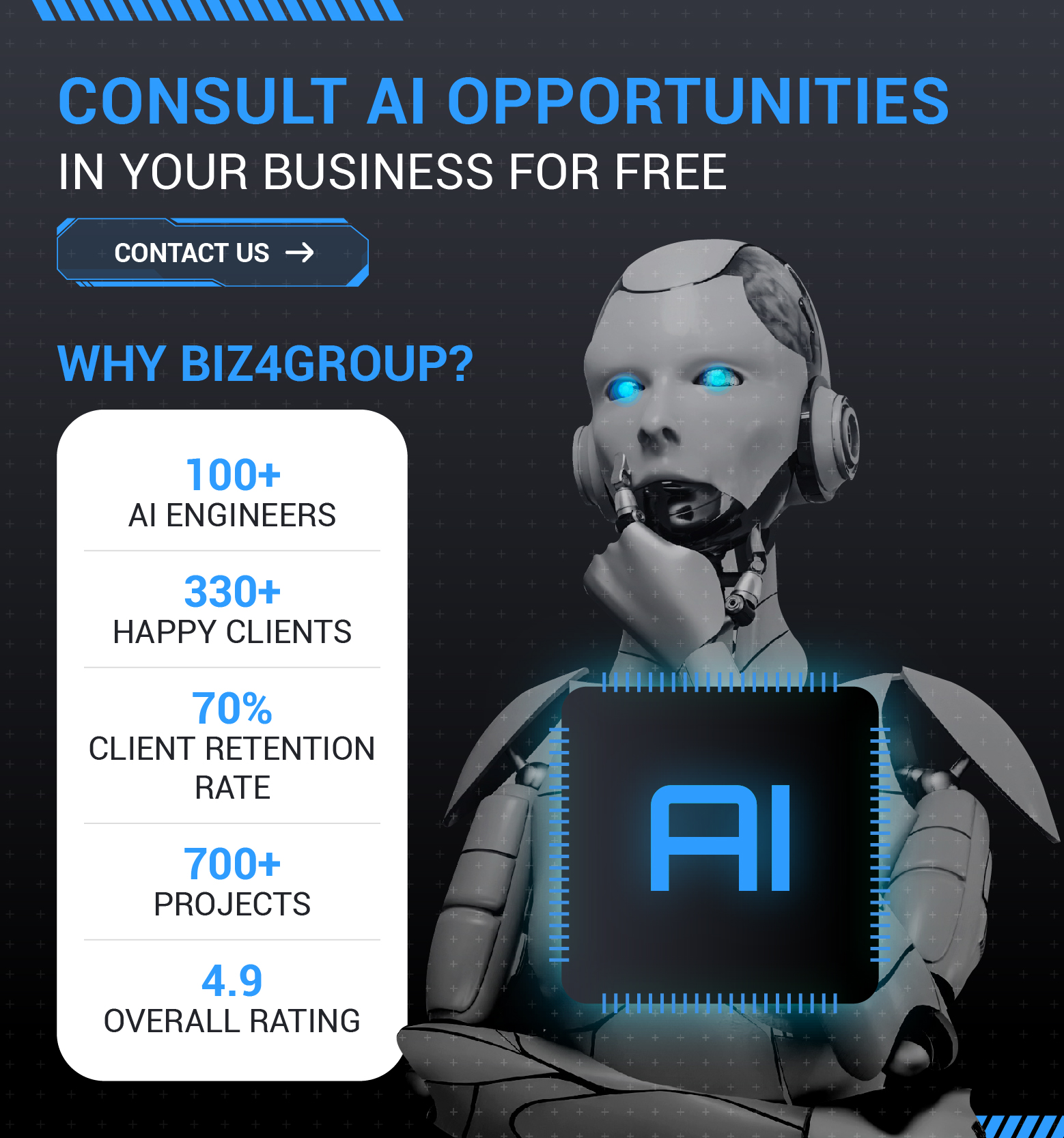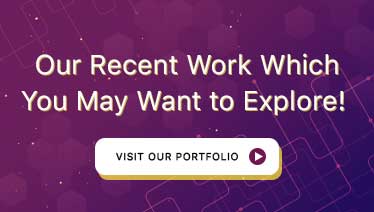Build an eLearning App or Website like Udemy/Unacademy. Here's How!
Over six million students are currently involved in online education, and virtual tutors are in high demand. -Distance Education Enrollment Report
The eLearning industry is undergoing a rapid transformation in terms of growth and capital. Students, parents and teachers are on board with the idea that online courses are a great alternative to traditional education. The pandemic has played a huge role in accelerating this transition of education to the stay-at-home format.
Every year, millions of users who wish to acquire new skills register on leading eLearning websites like Coursera and Udemy. Whether it be for educational certifications or skills to hone a hobby, online platforms give users the flexibility to choose what they want to learn, how they want to learn and when they want to learn! These are some factors that a traditional university or school cannot fulfill. And the fun part about eLearning websites or apps is that one can learn anything- ranging from math to programming to cooking- all kinds of classes are available on these platforms.
Not only does an eLearning app benefit the student, but it is also a great platform for those who love to teach and share their knowledge with a wider audience base, which is obviously larger than any university can ever provide! Therefore, eLearning websites allow teachers to build their portfolios and spread the word about their classes to earn a good profit.
This article will guide you on how to create an eLearning website or app like Udemy or Coursera. But first, let's take a deeper dive into the advantages of an eLearning platform that makes it such a hit amongst consumers.
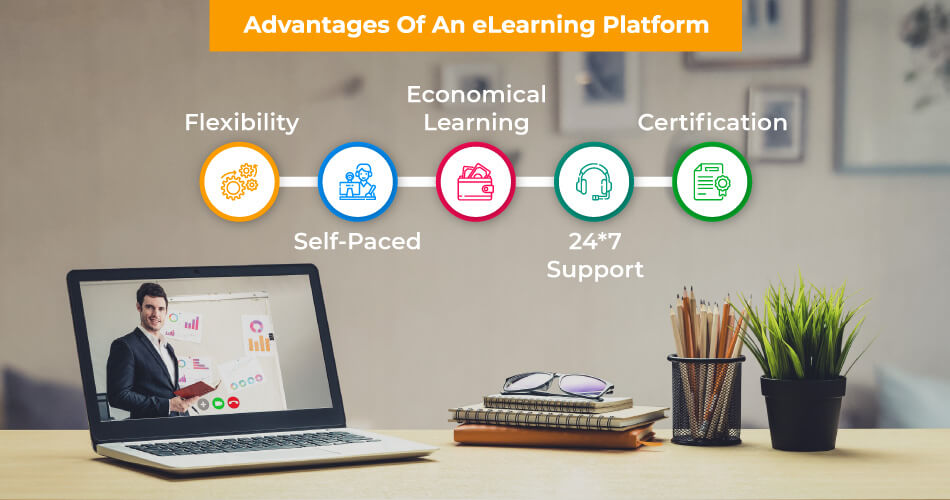
#1 Flexibility
-
Students can take courses anytime, anywhere
-
Students no longer need to travel to educational institutions. Instead, they can just study in the comfort of their homes.
-
These courses are ideal for full-time job employees or for people who cannot physically attend a college or university.
#2 Self-Paced
-
Students can pick a course as per their own learning capabilities.
-
There is no "competitive" environment similar to a physical classroom
-
The student gets "personalized attention" in contrast to taking a class with 60 students.
#3 Economical learning
-
Online programs are far more affordable when compared to traditional college campuses
-
Learners save money on course materials, accommodation, and travel.
#4 24*7 Online Community Support
-
Constant feedback from educators shared at the right time
-
Doubt solving via live chat
-
Engagement with other students/ like-minded professionals taking the same course
#5 Certification
-
Students can obtain certifications from esteemed institutions in any degree of choice
-
This sense of accomplishment motivates them to take up additional streams of interest
Steps to build an eLearning App and Website like Udemy/Unacademy
#1 Find your Model
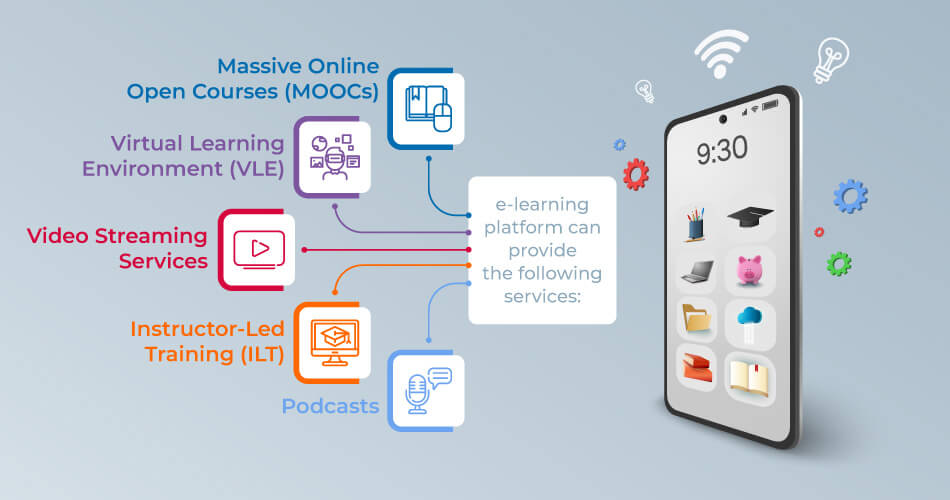
A typical e-learning platform can provide the following services:
-
Massive Online Open Courses (MOOCs)
-
Virtual learning environment (VLE)
-
Video streaming services
-
Instructor-led training (ILT)
-
Podcasts
Once you've finalized the kind of service your website will cater to, the next step is to decide how to monetize the service. Here are some models for you to choose from:
-
Paid Certificates: Create tie-ups with universities and educational organizations to provide learners with verified paid certificates
-
Subscription-Based Model: The learner can buy paid subscriptions to the website on a monthly or yearly basis. This will provide them with unlimited access to the website and all its resources.
-
Corporate Model: This model is specific to organizations who want to train their employees in a certain skill set and purchase a subscription for each of them from your website.
-
Paid Courses: In this model, part of the capital invested by the student will be sent to the instructor who uploaded the course, and the rest will go to the website owner.
#2 Decide on the Subject Courses to offer
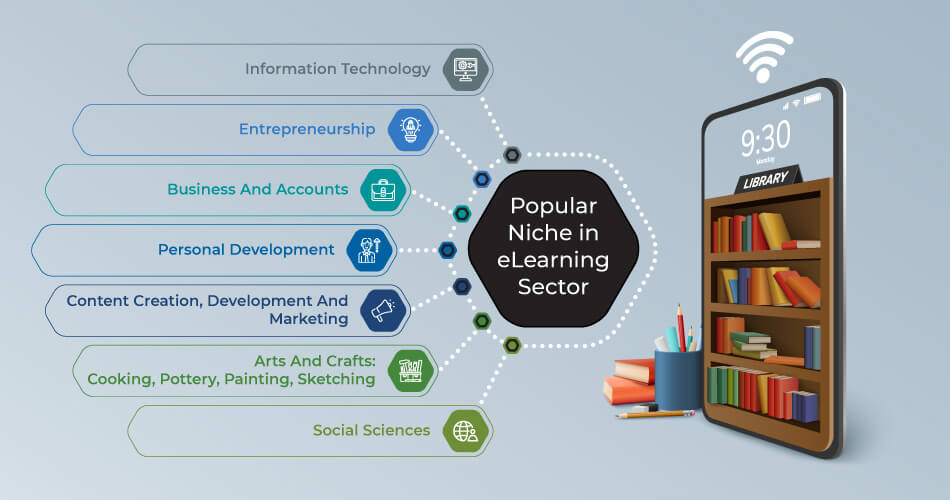
This will significantly impact the capital earned by your website/ app. You can incorporate a wide range of subjects like art & craft, health & fitness, educational certifications, etc. Or you can also launch an industry-specific education marketplace, like programming, for instance.
Here are some popular niches in the market that are in-demand lately:
-
Information technology
-
Entrepreneurship
-
Business and Accounts
-
Personal development
-
Content creation, development and marketing
-
Arts and crafts- Cooking, Pottery, Painting, Sketching
-
Social sciences
#3 Finalize Features of the Website/App
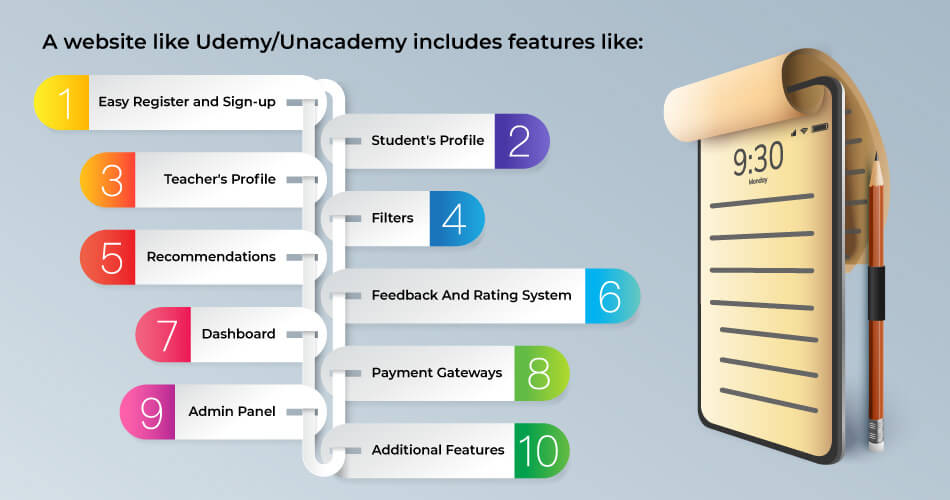
A website like Udemy/Unacademy includes features like:
-
Easy Register and Sign-up
-
Student's Profile: Students can update their profiles with details like age, university, subject of interest, etc. The profile can be edited whenever necessary.
-
Teacher's Profile: Educators can enlist their areas of expertise and other essential details that can later be edited/ updated whenever needed
-
Filters: Students can enroll in classes based on different criteria like subject, topic, language, ratings, price, duration, level of difficulty, etc.
-
Recommendations: The app/ platform must have a section to show trending courses, certificates, top-rated tutors, and related courses for the students to select from. For instance, if a learner has enrolled in a beginner course to AI, the website can suggest an intermediate level AI course as a follow-up.
-
Feedback and rating system: Students can rate a course and leave feedback in the comment section of the course.
-
Dashboard: It is a centralized panel with quick links, reports and actions related to a particular profile. It is very different for instructors and learners.
i. For instructors: The dashboard provides them with analytical data to view the number of enrolled students, ratings, and conversions. It can also allow instructors to create a course, upload study material, resources, etc. There should also be a forum for communication with students.
ii. For students: They can see the progress made in the current course, certificates obtained, learning progress/ goals achieved and ratings given along with the purchase history. Students can also save their favorite courses into the "Wishlist" for later enrollment.
Payment Gateways: The platform/ app must be integrated with secure and trusted payment gateways to ensure maximum safety during fund transfer
Admin Panel: The business/ app owner can manage both instructors and students from a centralized dashboard. He can also gather statistical reports, add new content to the website, and assign user roles and privileges.
Additional Features: Support section for website-related help along with a blog and newsletter section for sharing articles on trending topics.
#4 Development Approach
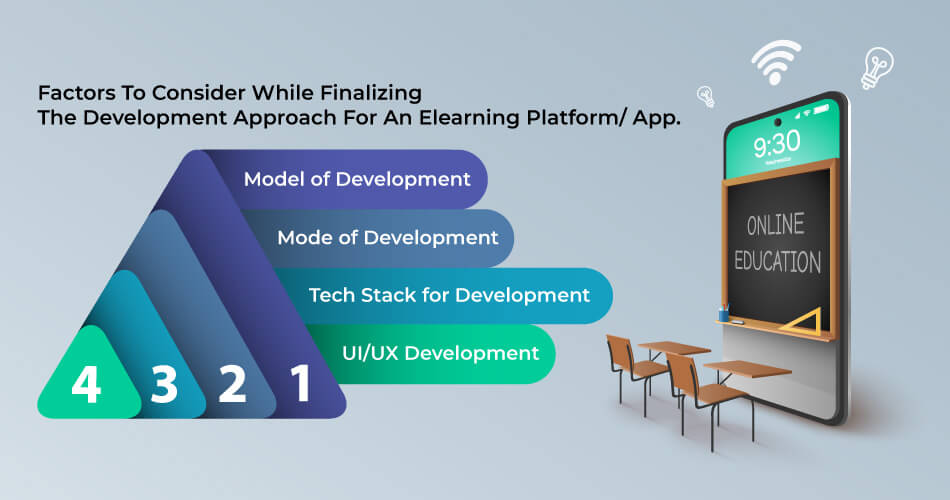
There are three factors to consider while finalizing the development approach for an eLearning platform/ app.
Model of Development:
This can either be a Waterfall approach or an Agile development approach. In the waterfall model, features are developed iteratively. After every iteration, client feedback is taken into consideration, and the features are improved. However, in Agile development, features are developed parallelly. Again, there are iterations involved, and after every iteration, the client feedback is implemented. The selection of the development mode considerably impacts the cost, timeline and effectiveness of the project.
Mode of Development:
Custom software development is more expensive and time-consuming. However, it allows you to create a website/app with any feature that you would like. In contrast, a template-based model comes with many free plugins and basic functionalities already hardcoded. However, you may face compatibility issues while adding a specific functionality other than what is already available.
Tech Stack for Development:
Here are some technologies for you to choose from:
Back-end- PHP, JavaScript, Python, Java
Database- MySQL, MongoDB
Front-end- JavaScript, AngularJS, HTML5, CSS3, React
Popular Payment Gateways: Stripe, PayPal.
UI/UX Development:
This is a very important aspect to consider while developing an eLearning website or app.
The UX/UI design is an iterative process that ensures navigating your website is a seamless task. As a result, websites like Udemy are easy to navigate and are simple and consistent in design. This makes it efficient to use for students and instructors (who are mostly not so tech-savvy).
There are certain considerations to take into account while defining the UI for your eLearning website:
-
Colors and illustrations should be carefully chosen while performing accessibility checks for differently-abled people.
-
Typography should be readable and visually appealing without being too busy. Business keywords can be tagged here so that search engine algorithms deliver favorable results every time.
A simple and clean UI/UX design will also reduce the loading and navigation time of pages/ screens. Opt for a minimalistic style to appeal to a wider audience base.
#5 Testing and Deployment
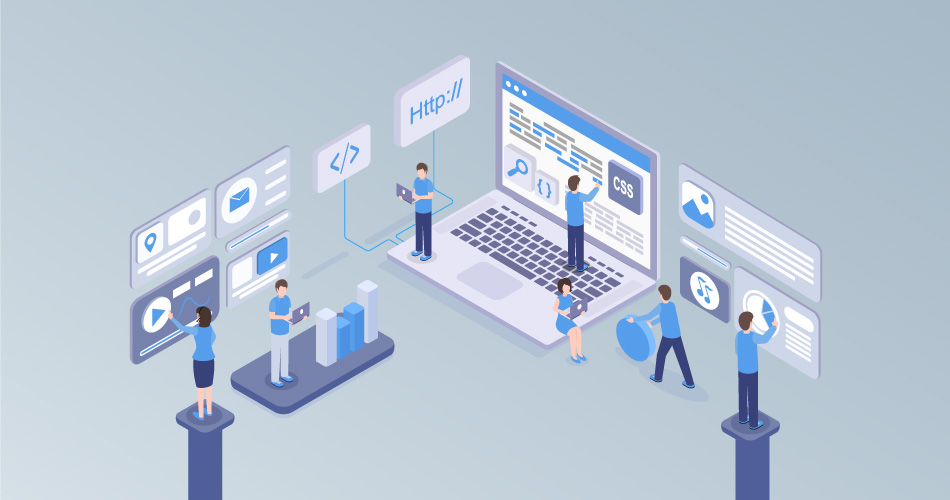
Multiple rounds of manual and automation testing are critical for any project:
-
Your QA team needs to check whether every functionality is working as expected.
-
Different use cases need to be formed and tested for bugs/compatibility issues. Once your bug count reaches 0, your website/app should be ready to deploy on the production environment.
-
A CI/CD approach can be used to deploy your project more effectively and efficiently.
Final Thoughts
Now is the perfect time to launch an eLearning website or app like Udemy/Unacademy. Students are looking for platforms to extend their knowledge base while staying at home, and teachers are looking for a platform to share their skills. Both the sectors are getting comfortable with the model of learning/teaching "at home." With great learning resources at disposal, you can expect the eLearning model to thrive even when things "go back to normal" post the pandemic.
Looking for a trusted development partner to help you develop your custom app/ business platform? With over 300 successful project deliveries to its name, Biz4Group is your ideal choice for custom development services. Reach out to our experts to book a free consultation session today!!
 info@biz4group.com
info@biz4group.com 
















